Mihaela Drăgan is an actress activating within the cultural space as part of the Roma feminist theater company Giuvlipen which she initiated together with Zita Moldovan și Mihai Lukacs. These past few years she’s been working mainly with shows that put forward an emancipating and affirmative vision on Roma women, analyzing from various perspective the situations these women are confronted with. Mihaela Drăgan mixes artistic practices with human rights activism and an active involvement in certain communities. This year, the artist was nominated for The Gilder/Coigney International Theatre Award, granted by New York’s Women’s Professional Theater League.
Tell me a little about your recent activity in Giuvlipen. Who are you and what do you intend with this theater company?
Giuvlipen is a Roma feminist theater group made up of professional Roma actresses in 2014. We want to offer an alternative to the way in which Roma people are portrayed in the media and in art (and the general public discourse). We make contemporary Roma theater and sometimes experiment in the area of performance art. Most of the time our shows talk about serious issues, for example racism or gender inequality, via comical mechanisms. We do a lot of critique via comedy and we generally avoid “teaching lessons”.
We use a lot of music in our shows, as well as all of our performative resources, despite the small budgets. Our long-term goal is to obtain funds in order to build a state funded Roma theater.
How are the Roma people represented today? In Romanian modern art history, the characters usually represent a white and generally wealthy world. Poverty is a taboo subject in modern painting (with few exceptions of creators who targeted the socialist left-wing during the interwar era) and so are non-white folk. With very few exceptions, the Roma are absent. Rarely do we see a Roma settlement (șatră) or a Roma woman (intensely sexualized).
Very stereotypical and full of clichés. This is where we started from when we initiated this project. We started to build a Roma dramaturgy that puts forward a representative, affirmative image about us, the Roma. We totally reject stereotypical representations or have others speak in our name, even via artistic means. We have an entire history of oppression and silencing, so no non-Roma artist has any right to represent us in their project without asking us first.
The documentation process of your shows is directly linked to your experience and work within the community? What are your theoretical interests? What kind of political/theoretical discourse asserts your artistic practice? I know you are preoccupied with black feminism.
We also work within communities and this is where we form our opinions. But not exclusively. When we formed the company, we didn’t set out to make documentary pieces that would show the reality of these communities 100%. I don’t think that’s even possible, besides we set out to avoid precisely the situation in which we are positioned as someone else’s speaking-tube. We can’t claim to capture everyone’s reality only after a few interviews, after all there are various communities formed by different individuals. We want to make political, provocative, experimental and highly performative art.
Otherwise, we read a lot of feminist theory, especially black feminism. The theoretical frame that I am most interested in for better defining my practice is inter-sectional feminism.
You build political shows based on marginal discourses and a political theory that is vaguely understood in the Romanian space. How do you survive? Where are your shows being played and who finances them?
We perform our shows wherever we can. We’re an independent company, the beginning is scarce when it comes to spaces, resources, etc. Our last show was hosted by Macaz, a friendly political theater-bar that offered us a rehearsal space. Because there is no Roma theater, it’s hard to find our place and to seek out constant financial support. We usually work on small projects, with no budgets, on themes that interest us and that we believe in. And we want to make a difference for the audience.
How real is the possibility of building a Roma state theater in the next years? What steps have been taken in this direction?
For now, there is nothing palpable. The idea of building a Roma theater has been flying around for more than 10 years, there were some steps taken with competent authorities. We tried talking to ministries of culture Ionuț Vulpescu and Vlad Alexandrescu, but to no avail. There are also other initiatives by Roma people of culture who tried to explain why this cultural institutions is necessary, but they got no replies.
Minority theaters are usually subordinated to town halls (i’m thinking of the Jewish State Theater, the German and Hungarian theaters in Timișoara and Cluj etc). Did you try the Bucharest town hall? I’m thinking that a woman-mayor might be more open to this initiative.
Yes, the majority work under the local authorities, but it’s not the only legal possibility. The Hungarian theater in Târgu Mureș is under the Ministry of Culture. We did not ask for an audience at our town hall just yet, but we’ll probably do that in the near future. At the moment, this project is in its lobby stage and I think we need to be as present as possible in the public space in order to increase the visibility of our projects. Right now, by building a public and raising the audience, we’re implicitly lobbying for the need to build this theater,
How are you copping in the absence of this institution, in a mostly free theater market in a typical eastern-European context (marked by poverty and racism)? What kind of roles are you given? Is there a possibility of collaborating with the state theaters?
Basically, Giuvlipen was a response to the need for being rid of these label type roles I was always offered. It’s evident that when your skin is not white, it does not correspond to the typology they want, besides, once you publicly assume a Roma identity, you remain identified by this one label and all the roles you’re ever offered are within this zone. Even in the case of televised commercials, I am only offered roles for India, The Emirates: I have never been called for a commercial for the Romanian audience. Clearly I don’t fir here.
We’ve never attempted to put our plays forward to any state theater because there is no precedent in this direction. I know state theaters do not collaborate with the area of independent theater, not just us Roma, but they generally never host or support independent productions. We ended up at some state theaters in the context of certain festivals, we were invited and very warmly received with our shows in Hungarian theaters. The Hungarian theater minority has always been very solidary and has offered us support.
Tell me a little bit about the subject matter for your shows.
In Del Duma we talked about untimely marriage, this show was meant as a documentary with the stories of girls/women from traditional Roma communities who were trying to find an alternative for this social pressure that still exists in many Roma families. The show starts off with my story because I felt it was not right to let the other women expose their stories without putting myself in a vulnerable position first, without letting my personal story be publicly judged alongside the others. I became close to them by admitting my vulnerability, fully aware of the fragility of the area I was heading in. Of course, there was a lot of self-irony, an approach I often chose. Then we worked on La Harneală, about the forced evictions of the Roma people living in the Rahova-Uranus area. I worked with women of this community who wanted to make a show about eviction, they brought Mihai Lukacs in the project and he got me involved. We were part of the anti-eviction protests and were familiarized with these issues, we also knew the community.
Does La Harneală make use of community art practices?
Yes, even though it is a show based on real stories, everything has been fictionalized.
We set out to illustrate certain abuses that authorities commit against the people and so we did a cooperative project. It’s difficult working with people who aren’t actors but have a certain experience that legitimizes their presence and their intentions within a theater play. We worked hard to understand our roles and the nature of this artistic demarche. The process was based on exchange and learning from each other. We switched the roles in this show and these women played the local authorities (mayor, local counselors, etc.).
Class-drag.
Yes. We wanted to go beyond putting the subject in a sad light with this show as well. We did not want to make the privileged spectator feel better by shedding a few tears at a play. Sometimes it’s not about that. After this show I worked on Gadjo Dildo, a play about the sexuality of Roma women. This is a very taboo subject in our community, there is very little talk about these realities.
And on the other side, a very eroticized matter. The hyper-sexualization of Roma women in the Romanian imaginarium is a continuous problem here that has probably affected a lot of people.
Exactly. I opened the first discussion about the existence of gay people within Roma communities by integrating the story of a lesbian Roma woman in this play. The communities told us there is no such thing, that homosexuality is not specific to Roma. Even if the show was perceived as shocking and transgressive within the communities, for the first time ever we were contacted by gay Roma people, people who can’t fit in either the Roma or the LGBT communities (the former due to homophobia and the later due to racism). I think it was the first time these people were represented within a theater play and could identify with a public discourse. And in my last show, Who killed Szomna Grancs? we touch up on many problems that affect the lives of the Roma youth. The text was written by Mihai Lukacs, using the “Rashomon effect” as the main technique. This was used by director Akira Kurosawa in the movie with the same name and puts forward a scenario with various contradictory perspectives on the same subject. Basically, we told the story of Szomna through the eyes of various characters within her proximity, whose perspectives on the case are filled with contrasts and contradictions. All stories are real, but they contradict each other. We wanted this type of show that keeps the public constantly guessing. The story is haunted by the message Szomna wrote before she died; this message is not revealed until the end of the show, we still show it to the audience.
I noticed that your artistic interests go beyond the theater space and that you started working with performative projects in spaces that traditionally cover visual art. Are you looking for new means of expression, new areas of action?
I’ve done various performances, about 6. Since 2014, the moment I started working with Mihai Lukacs, I migrated towards this area as well, of which he was more fond of than I was at the time. Traditionally, in the Romanian space there are few connections between theatre artists and visual artists. These are two different worlds that do not collaborate at all and don’t really know each other. Mihai was also interested in this area and we started to collaborate together on various projects, especially performance art in galleries/spaces that are specialized in working with visual artists. I’ve collaborated with Salonul de Proiecte, tranzit, ODD and Galeria Posibilă. I don’t consider myself a visual artist, I do make performance art but permanently influenced by the theatre. Besides, if I may be so bold, I don’t get what’s with performance art in Romania. Everything I’ve seen looks to me like amateur theater and it really bores me.
What’s your relationship with film?
I was never really interested in film either, I still haven’t exhausted theatre yet and I don’t feel the need to look for other spaces of artistic expression. Film is an important challenge, it’s the most sought after means of expression, the only one that makes it to the large audience. I played a very small role in Aferim!, but there was no room to express myself. I was happy they finally made a movie about the Roma slavery, but since there were so many people involved, lots of extras, the atmosphere was a little tense because there were some racist jokes flying around, etc. But I worked with Radu Jude very well, he is a person I admire professionally and humanly.
And Paris?
Just to make things clear on the discussions that prompted this interview, in Paris I accepted a role in Magie Noir, directed by Fanny Ardant because I was curious, I wanted to meet Fanny (an actress I appreciate). The Bastille Opera in Paris has invited artists to produce short films in which the public is invited at the opera, to know the opera and reinterpret it in a contemporary way. Fanny was also invited to make a film as part of this program, pretty experimental. And this is how I ended up the protagonist in her short. I enjoyed the work atmosphere, I had a lot of fun!
She has made another short film about the Roma’s lack of access to education in the past, but she’s not very political although she is aware of the existing inequalities and discrimination against the Roma. It’s true, her bohemian, romantic perspective on Roma people can be perceived as exotic. But not even this exoticism is easy. Depends on who represents things that might be considered exotic, like the passionate love between Roma or horses or the fire from the șatră. I recently had an experience with a Norwegian activist artist who invited us to participate in his Documenta project for this year. We suggested a performance about the camps of Transnistria, he was looking for something more romantic about nomadism. We didn’t get along so in the end we left the project. I’ll say it again, it’s a project initiated by an artist who is very political. Theoretically at least, because in practice, what he suggested was a very stereotypical project. So there’s a lot of work to be done, including the artists who claim they are political, leftists or activists.
I think that it’s hard to transition from theory to practice. After all, we all have internalized stereotypes whether we like it or not, and theory sits on top of them, but I don’t think this produces a profound change. I think that only direct experiences emotionally molds perception and produces real changes in people.
This is also what I gathered from interacting with various engaged theorist. I have a feeling they just talk and talk, but without the experience, the insufficiently build discourse and the not so realistic theoretical arguments are aggressively radicalized, and they end up discriminating the people they theoretically defend. Let’s get back to Fanny, as I was saying, she has a more romantic view on passionate love and the profound connections that we Roma have to nature.
This exoticism needs to be discussed and questioned, it doesn’t always amount to discrimination. I’ll give you a personal example. A few years ago, a Roma guy was scolding me in a public shaming that I dance at Roma music concerts and that I am reinforcing the stereotype of the Roma dancer. It was a very insulting and invasive perspective that borrowed the racist discourse. That is to say that I, a Roma woman, can’t go to a concert and dance because all the racists see us as just a bunch of musicians/dancers? And if I were to take things further: what would it be like if I went to Valea Seacă and tell the women working at the Forum Theatre how to live their lives? They’re all so poor that they leave to beg in Sweden and manage to make a better life with the money the got from begging. Should I tell them to stop begging because they reinforce the stereotype of Roma beggars? Who would offer these women work? The state nor discrimination is not helping them find a job.
Sweden was the place where Păpușa (Doll) also used to beg, a woman that survived the Holocaust and who should have, ideally, received some kind of compensation from the state and a pension to help her live a decent life.
There are countless hard life stories and the Roma do not chose to live in poverty. They are isolated in towns with access to nothing, no place to work. No one hires them, best they can do is a seasonal job, or get paid by the day (a very low income – the equivalent of 1 euro per day). So they head of to Sweden, they beg for about a year, and with that money they can build a house.
What I’m trying to say is that the realities of these people remain unknown, yet they are required to perfectly meet the realities of others. I come from a family of musicians. I use a lot of music in my shows and I have a real connection to this music. I appreciate it, it’s part of my identity. It’s silly to stay away from traditional music or manele music and refrain from dancing so as to not enforce any stereotypes.
What do people in this reality do? How do they fight racism and stereotypes? At one point, on Facebook, you said that you have no allies. What advice would you give an ally?
I have grown a bit tired of trying to win allies for the Roma cause. Even the people you expect to understand don’t quite get it. First thing’s first: we need space to express ourselves. To showcase our skills, talents and knowledge. I think this is what an ally should do. To try to listen and learn something from our experiences.
Getting back to art, please tell me how important is form for you? Are you willing to make political compromises for aesthetics?
From the very start we knew that the form of engaged theater that completely renounces aesthetics (or renounces this logic) doesn’t work in the Romanian space. People don’t listen to the message, they get bored. I can’t scream to the public “you’re all racist”, these delicate matters must be explained, nuanced and packaged to suit everyone’s understanding. There is a need for images and performativity so the message becomes mediated by the story and the impact is greater. Most of the time, the Roma movement thinks we’re doing post-modern art that is too complicated for them. We talk about provocative subjects like: LGBT, feminism, the sexuality of Roma women; whereas the Roma movement is often conservative.
On the other hand, for Roma art to become a voice that is heard nationally and internationally, it must consolidate its practices and come up with quality projects, perfect its aesthetics and the artistic languages it approaches.
Tell me about the projects you’ll be working on in the next few months.
Now I have two theater projects that are very dear to me. One at the Maxim Gorki Theater, a political theater that won the prize for best theater in Germany. It’s a stable institution that works with a diversity of actors from all over the world, including refugees. I am working with a Jewish female director based on the idea of Roma Army Faction, imagine if this was a rebel army of Roma women (like the Kurds). I am curios to see where it will all take us, but I totally trust this director, I’ve seen some of her shows and I thought they were super wow, something totally different than anything I’ve ever seen. The actresses are also from various countries. The project started with Mindj Panther, a Roma subversive hip-hop band. The idea is theirs. I know them and follow them for some time now, I’m glad I ended up working with them. During the casting I discovered a lot of cool Roma actors from all over Europe. There are more of us than I thought! It’s my first time working with a state theater.
And the second shows will be a remake ofBudai Deleanu Țiganiada. In Berlin as well.
And the new film I’m staring in is based on my real experience with TVR (National Romanian Television Station), where I worked as a moderator without getting paid. And Nicoleta Vișan, a young Roma female who became a leader for her community. But the script is fictional, it’s only based on these stories. Because, again, I am not particularly interested in a dry documentary.
POSTED BY
Valentina Iancu
Valentina Iancu (b. 1985) is a writer with studies in art history and image theory. Her practice is hybrid, research-based, divided between editorial, educational, curatorial or management activities ...


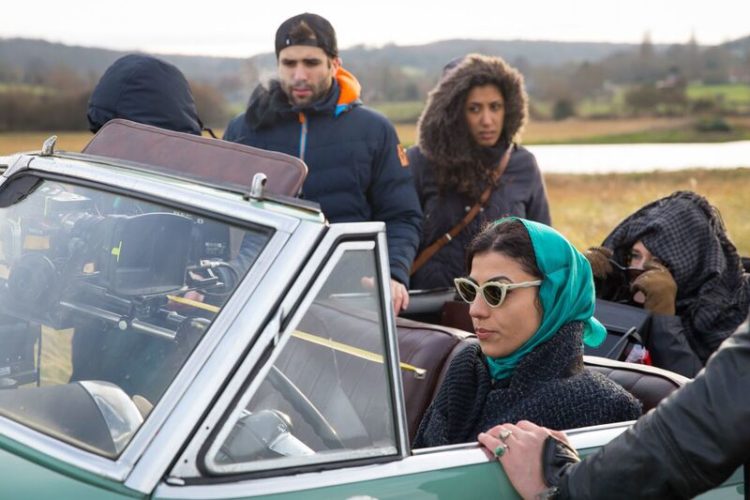
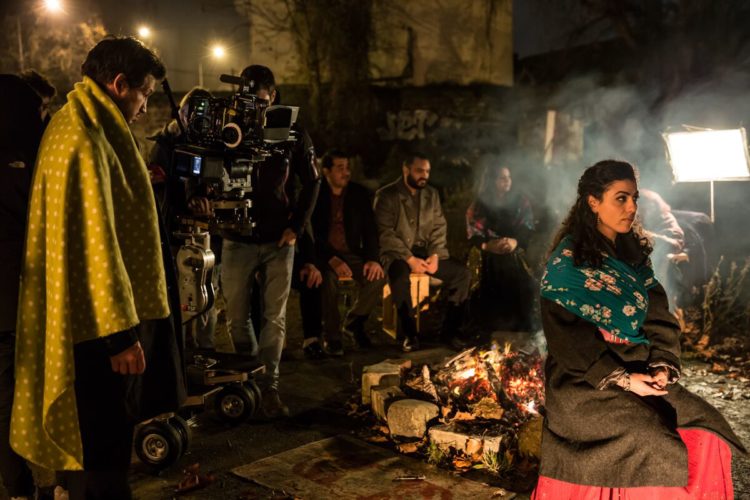
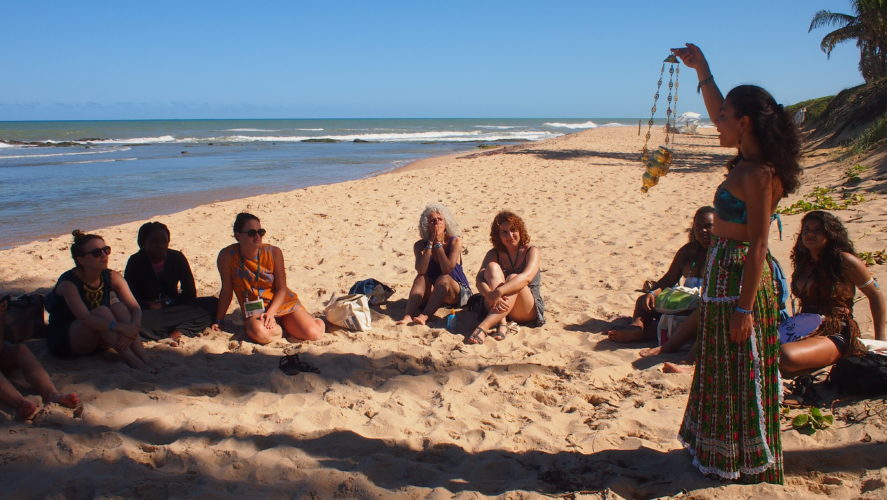
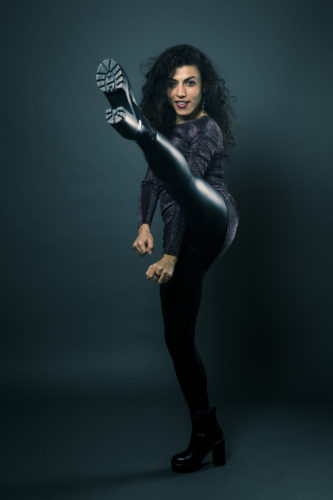
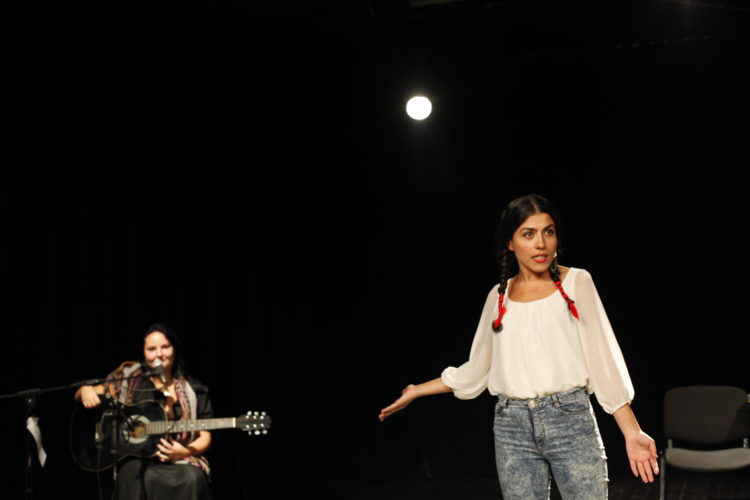
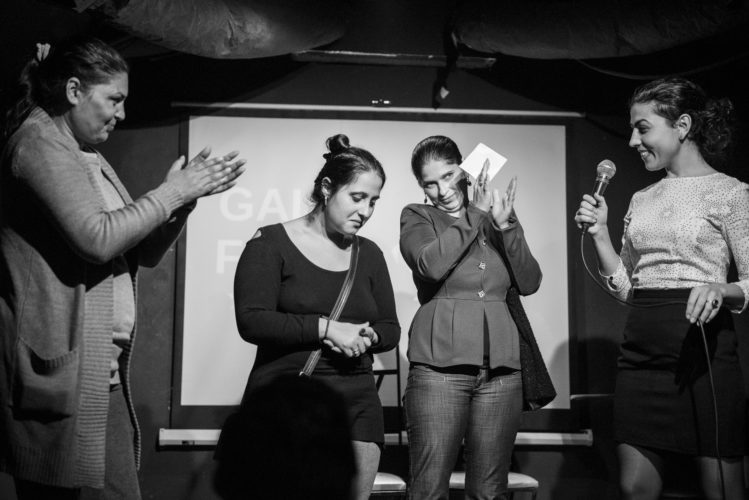
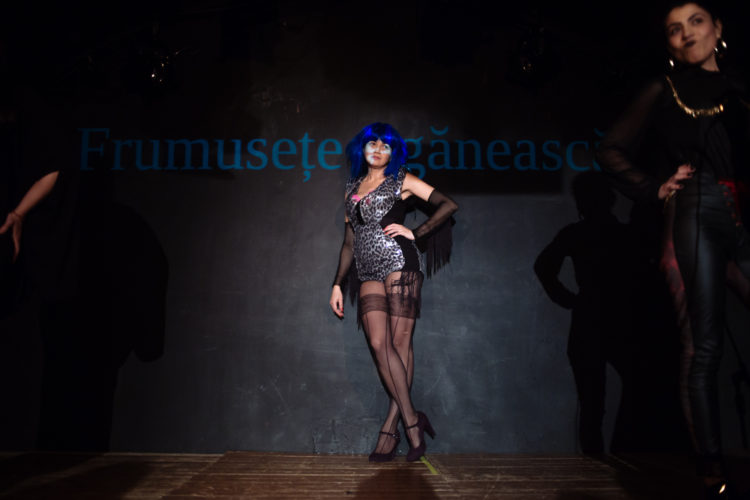
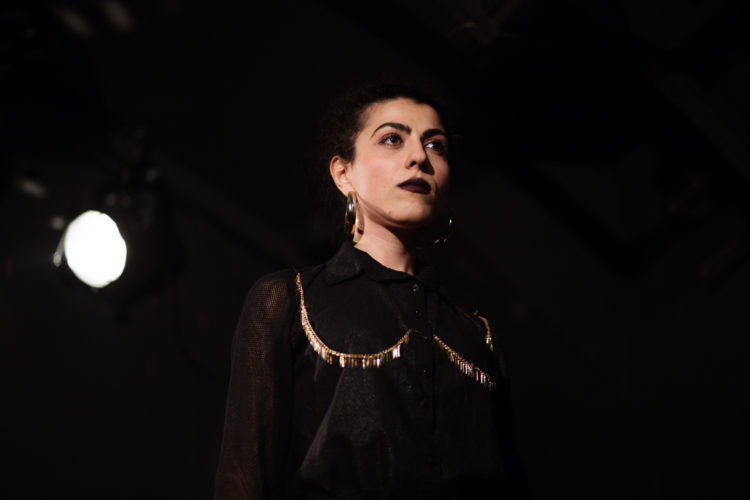
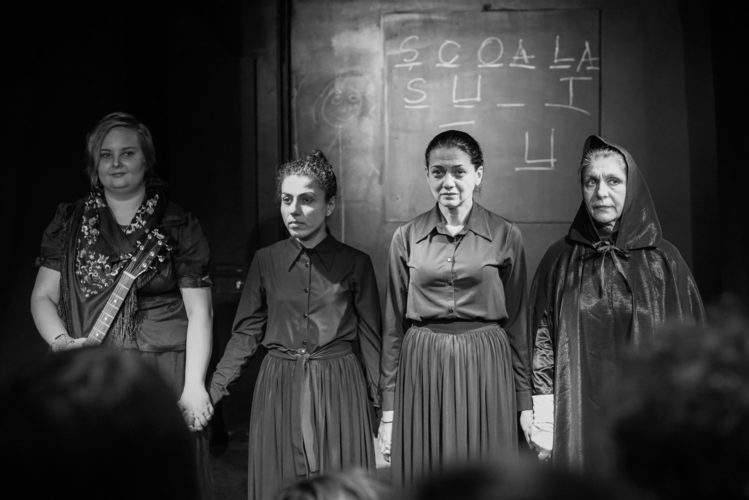
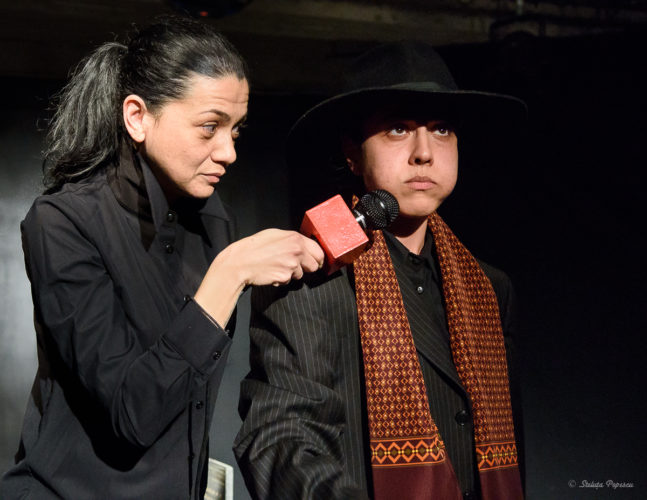
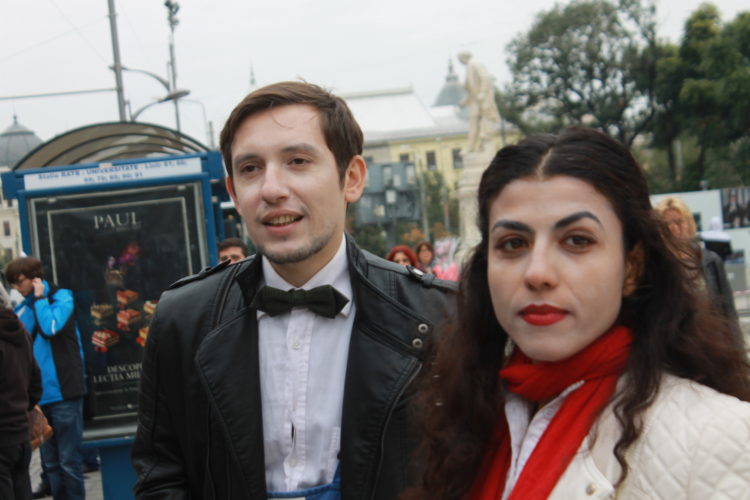

Comments are closed here.